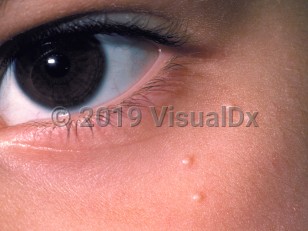Milia in Child
See also in: External and Internal EyeAlerts and Notices
Important News & Links
Synopsis

Codes
L72.8 – Other follicular cysts of the skin and subcutaneous tissue
SNOMEDCT:
254679001 – Milia
Look For
Subscription Required
Diagnostic Pearls
Subscription Required
Differential Diagnosis & Pitfalls

Subscription Required
Best Tests
Subscription Required
Management Pearls
Subscription Required
Therapy
Subscription Required
Drug Reaction Data
Subscription Required
References
Subscription Required
 Patient Information for Milia in Child
Patient Information for Milia in Child- Improve treatment compliance
- Reduce after-hours questions
- Increase patient engagement and satisfaction
- Written in clear, easy-to-understand language. No confusing jargon.
- Available in English and Spanish
- Print out or email directly to your patient


